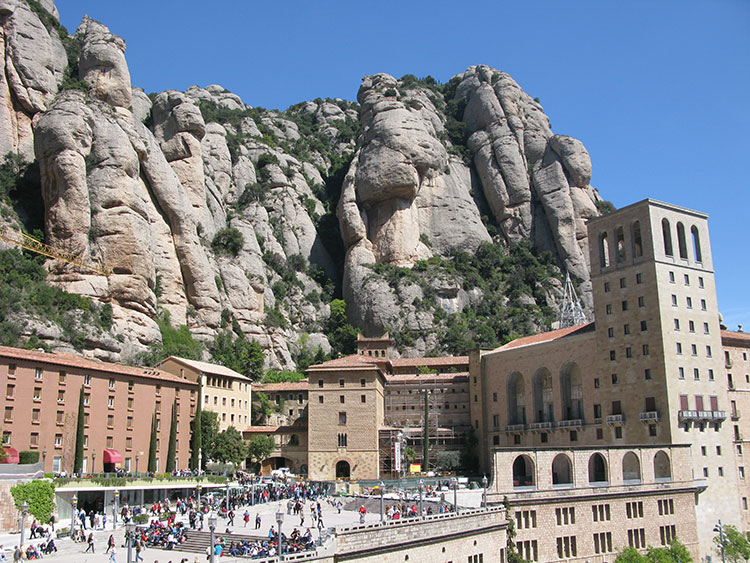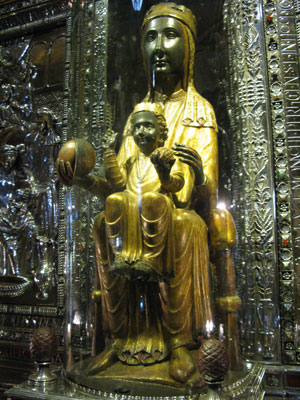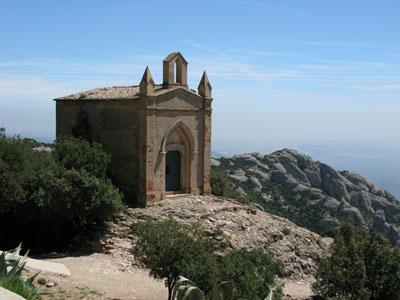Spending a day on Montserrat
This article appears on page 46 of the April 2013 issue.
by Kenneth Jessen; Loveland, CO
On a 2-day stop in Barcelona, part of a Mediterranean/Black Sea voyage with Holland America Line in 2012, my travel companions, Gary and Bev Hartman, and I took an independent trip to Montserrat on the first day, knowing that we would have more than a day to return to the ship.
Gary and Bev did their homework and found that for €24.25 ($32) per person, the trip on the Metro to Espanya station, a narrow-gauge train ride to Monistrol de Montserrat station, a trip on the rack railway and rides on both funiculars could be purchased as a bundle. We purchased our tickets at the information office below the Christopher Columbus statue near the ship.
Getting there
The only difficulty was finding where the narrow-gauge train was located within the underground, multilevel Espanya station. It was not well marked, and the area police were of no help. Finally, we saw a sign that said “Montserrat” and followed it to an obscure part of this underground complex.
Trains to Montserrat leave during the day at 36 minutes past the hour, every hour. The train trip to Monistrol de Montserrat station, which took us through the Spanish countryside, up into the mountains and through tunnels, was delightful. (Note: the first Montserrat station you’ll reach is for the cable car, not the rack railway.)
The rack railway leaves from the same platform as the narrow-gauge train, so it was but a short walk. With large windows, the cars provided excellent views of the countryside below and the cliffs of Montserrat above.
After about 20 minutes, the rack railway journey ended just outside Montserrat’s large plaza, often crowded and surrounded by shops and restaurants.
The basilica
The Basilica at Montserrat, located at the east end of the plaza, contains a unique statue of a black Madonna and Christ child. With one hand, she holds out an orb. The statue is protected by a rounded glass shield, except for the orb, which protrudes through an opening. Pilgrims make the journey there to touch the orb, so others should be respectful.
To reach the black Madonna, you must pass through a plaza and then into the basilica. On the right-hand side of the sanctuary are stairs leading up to a narrow passage to the left, then more stairs up to the statue, overlooking the altar. Continue down a second set of narrow stairs and you’ll end up on the left side of the sanctuary.
The wooden icon is shrouded in legend. It is said to have been discovered in the ninth century by shepherds who were guided by a divine light to a cave on the side of the mountain. According to carbon dating, however, it was created in the 12th or 13th century.
Chapel visits
The Funicular de Sant Joan, rising from 1,000 to 3,200 feet above sea level, was worthwhile. This funicular is located just to the left (west) of the rack railway station.
At the top, a wide, graded trail leads to just below the crest of these unusual mountains.
Made of a very hard conglomerate, the mountains have been rounded by erosion and take the forms of blunt spires. After a little over a third of a mile, the trail led us to the Saint John chapel, perched on the edge of the steep slope.
Beyond the chapel, the trail suddenly narrowed, cutting across a ledge that had been built up on a rock wall and past a clear pool of water to a set of rough-cut stone stairs. For those who want more adventure, the stairs lead up to a little wooded area with great views. Descending the stairs puts visitors back on the graded trail.
Another funicular takes visitors part of the way down the mountain to the Santa Cova grotto and chapel. This is the holy site where the statue of the Madonna and Christ child is believed to have been discovered.
The trip to Montserrat from Barcelona and back was both scenic and historically interesting — a good day spent.



